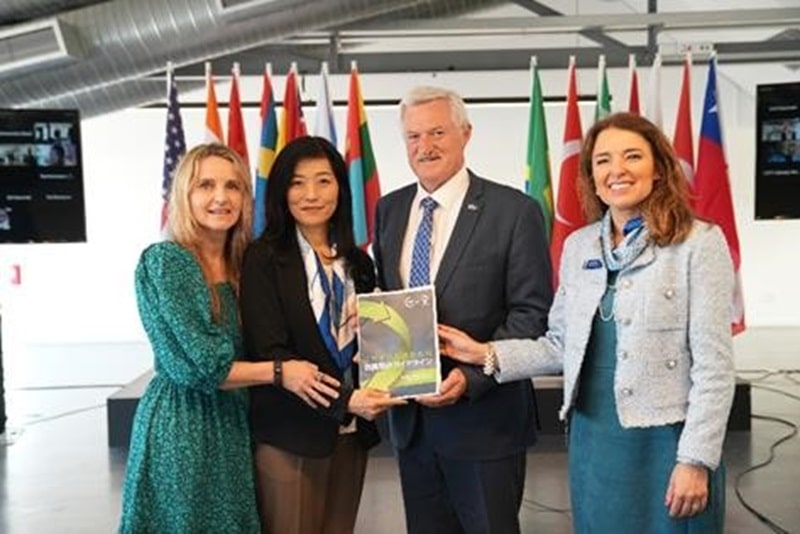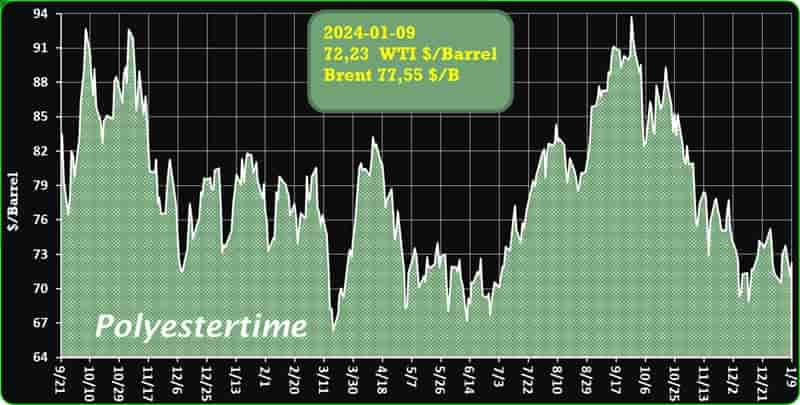This content has been archived. It may no longer be relevant
Honda considering $18.4B electric vehicle and battery plant in Canada: media report
Honda Motor Co. Ltd. could invest upwards of $18.4 billion in an electric vehicle plant in Canada, according to a report from a Japanese news outlet.
Nikkei Asia said on Sunday that Honda is considering building both a vehicle and battery plant in the country as part of efforts to catch up in the electric vehicle market.
The report says Honda is looking at several sites, including next to its existing plant in Alliston, Ont., with a potential investment decision expected by the end of the year.
A spokesperson for Industry Minister Francois-Philippe Champagne did not confirm whether any talks were going on between the company and the government.
The minister said in a statement that the report about Honda’s potential investment is a “testament to Canada’s growing reputation as a green supplier of choice and global EV leader.” Recycling Guide
“Reports about Honda looking to make a significant investment in Canada speaks to the quality of workforce and the strength of our industry,” Champagne said in the statement.
The Nikkei report says the abundance of renewable energy in the country is part of the reason Honda is considering Canada, while in December the federal government mandated that all passenger vehicle sales would be electric by 2035.
Honda is retooling a production plant in Ohio to produce electric vehicles and has an agreement in place to build an electric vehicle battery plant in the state with LG Energy Solution, but the report says the company might go it alone on the battery plant in Canada. Recycling Guide
LG is already in a partnership with automaker Stellantis to build a $5 billion battery plant in Windsor, Ont., one of numerous major EV investments Canada has secured after offering generous subsidies.
Volkswagen is building a battery plant in St. Thomas, Ont., and Northvolt is building one about 30 kilometres east of Montreal, with the three plants expected to cost tens of billions of dollars in subsidies linked largely to production volumes. Recycling Guide
More…
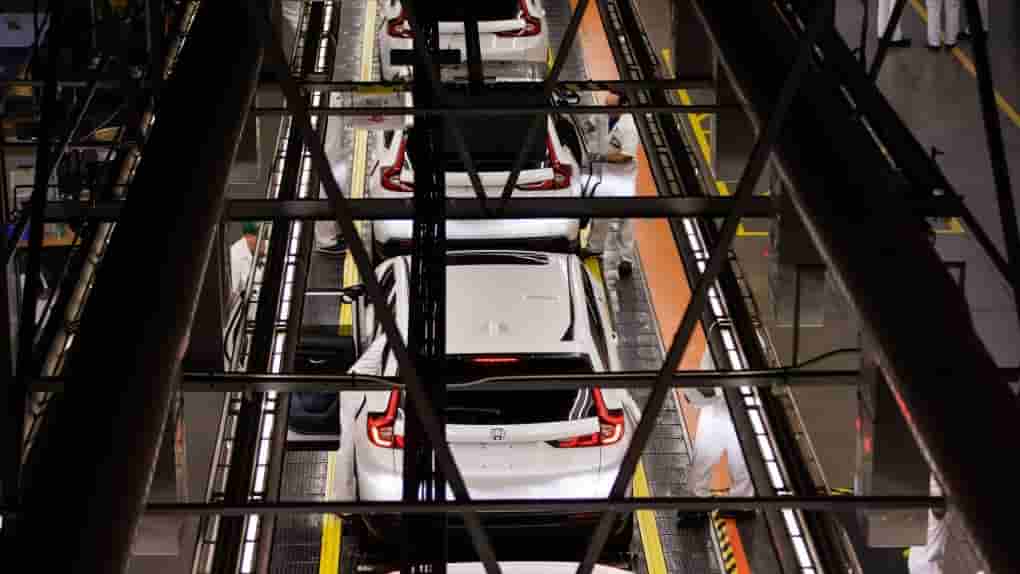
Antimicrobial Hospital Textiles Market worth $9.4 billion by 2025 | Key players Atlas Milliken & Company (US), Trevira GmbH (Germany), Unitika Trading Co. Ltd. (Japan)
According to recent market research the “Antimicrobial Hospital Textiles Market by Material, Usability (Disposable, Reusable), FDA Class (Class I, Class II, Class III), Application (Attire, Surgical supplies & Wipes, Sheets & Blankets), Hospital Department, Region – Global Forecast to 2025”, size is estimated at USD 7.1 billion in 2020 and is projected to reach USD 9.4 billion by 2025, at a CAGR of 5.8%. Increasing population, medical infrastructure development & health promotion by government authorities, and increasing affordability are major key driving factors for the growth of the antimicrobial hospital textiles industry. Recycling Guide
Cotton was the largest material type in the overall antimicrobial hospital textiles market. This is because cotton is susceptible to microbial attack, as is it a naturally occurring plant fiber. Cotton is very soft in nature and renders comfort when it is in contact with the skin. Due to comfort property, it is used more as compared to other antimicrobial hospital textiles material. This factor is driving the demand for cotton in the antimicrobial hospital textiles market.
Attire is the largest application during the forecast period. The attire worn by the doctors, patients, and staff members in a hospital should be hygienic as it can act as a source of HAIs. Patients with lower immunity are highly susceptible to infections. Attire is used to protect hospital staff and prevent HAIs and is a mandatory practice in hospitals. Hence, the demand for antimicrobial textiles is high in the attire application. Recycling Guide
More…
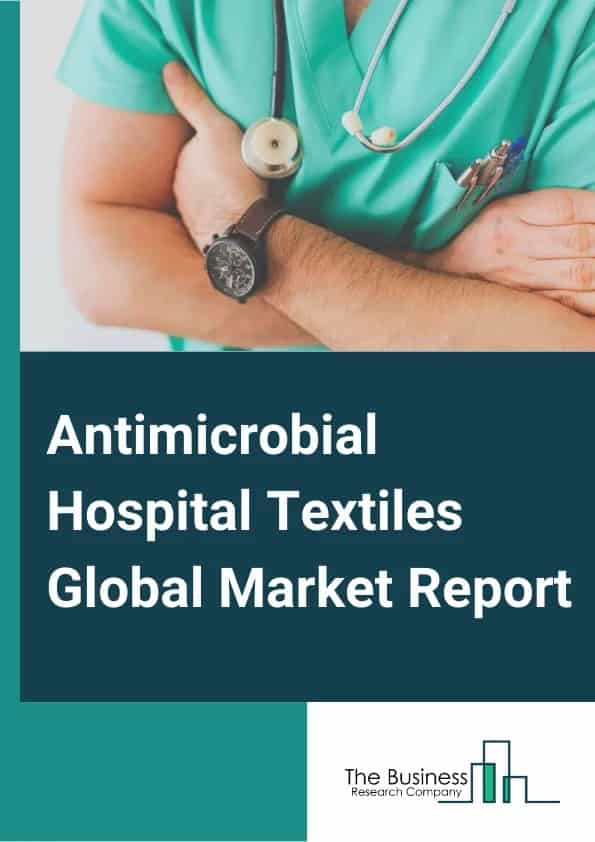
Western LLDPE Market Confronts a Decline in December Amidst Trade Challenges
In December 2023, the Linear Low-Density Polyethylene (LLDPE) market experienced a depreciation in Western markets, particularly in the US and Europe. The weakening in prices can be primarily attributed to the global weak demand for LLDPE and the abundant availability of stock. The decrease in feedstock Ethylene and upstream Naphtha costs in the region has also played a role in pushing down the prices. Furthermore, various factors such as the holiday season, geopolitical tensions in the Middle East, supply chain disruptions caused by low water levels in the Panama Canal, and an attack by Houthi rebels affecting transportation in the Red Sea amid an economic slowdown, have collectively influenced market dynamics and contributed to the pricing fluctuations of LLDPE during this period. Recycling Guide
Thus, the price of LLDPE Film Butene-based FOB Texas(USA) fell by 2% while the LLDPE Film FD Hamburg(Germany) declined by 5% this month.
The LLDPE market in the United States experienced a plummeting trend due to sluggish demand from downstream packaging and construction industries this month. Despite fluctuations in feedstock Ethylene, influenced by improved market activity before the holidays, and a continued decrease in upstream Naphtha amid easing Crude oil prices, LLDPE prices saw an overall decrease. Initially, the month witnessed steady market activity with a consistent flow of customer orders for LLDPE. Recycling Guide
However, as the year approached its end, some buyers reduced their purchasing efforts, maintaining a positive outlook and anticipating the possibility of December discounts extending into January. Further, export demand from the United States remained steady in Europe and Latin America. Sellers were willing to consider fair offers, leading to reduced prices in exchange for larger quantities, although there were some limitations on the extent of discounts which overall led to a slump in the price of LLDPE.
More…
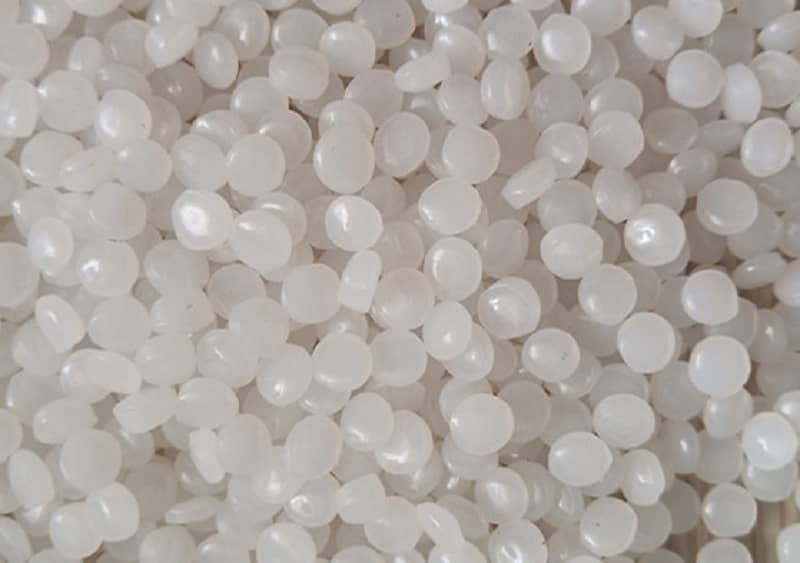
Revolutionary indigo dye makes denim more ecofriendly
Two Israeli companies team up to bring a new level of sustainability to the highly polluting textile industry.The indigo dye market for the jeans industry is estimated at $1.5 billion a year. However, traditional indigo yarn dyeing processes require an average 60,000 liters of water per process and use polluting chemicals such as hydrosulfite.
Israeli green-tech company Sonovia developed a chemical-free, ultrasonic indigo dyeing technology, D(y)ENIM, which drastically reduces water usage, chemical waste and energy expenditure in the dyeing process, without hydrosulfites. Recycling Guide
Two European denim makers, France’s Kering and Italy’s PureDenim, have already integrated Sonovia’s yarn-dyeing technology into their production lines.
Now, D(y)ENIM will be scaled up significantly thanks to a collaboration with a fellow Israeli company, industrial chemicals company Avco.
The collaborative will focus on producing an industrial quantity of the dye. Avco will leverage its expertise in marketing chemical products internationally to promote and sell the ecofriendly indigo dye and technology to global textile and fashion companies.
According to Sonovia cofounder Shay Herchcovich, “The successful completion of the first phase is contingent upon achieving key criteria, including reaching a production rate of at least one ton of the indigo dye per week, meeting quality requirements defined by Sonovia’s first customer, confirming the sale of 80 tons of the material, and mutual agreement between the parties.” Recycling Guide
More…
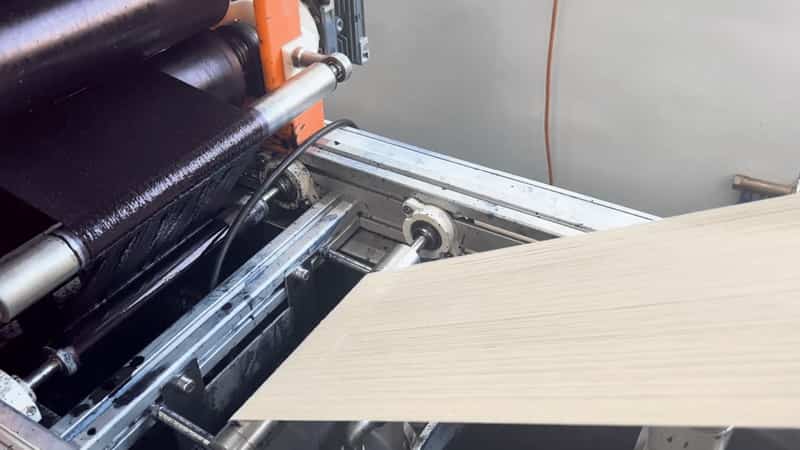
Green Innovation: Progress Report – Third Edition highlights:
- In 2021 plastic recycling patent filings have reached an all time high.
- Drop in filings from previous highest filer Eastman, but the rest of the sector show growth.
- Pyrolysis is still by far the main source of chemical recycling innovation, and continues to grow rapidly, but there is also growth in other emerging technologies such as biodegradation and electrolysis. Recycling Guide
- Strong growth is also found in innovation for the downstream processing of the treated polymer waste.
The evolution of innovation and patents in chemical recycling
The variety of plastics and compositions containing plastic have produced a reliance on them in a considerable range of applications. Traditional petrochemical-derived plastics, such as polyethylene (PE), polypropylene (PP), polyesters, polyacrylics, polystyrene and polyvinyl chloride (PVC) have evolved over decades, offering highly-specialised properties for such applications. They remain highly valuable materials, essential in many areas, and this seems set to continue until greener alternatives can sufficiently replicate their performance. Recycling Guide
However, continued use will also likely require that such plastics become easier to recycle because the majority of plastic waste takes decades to biodegrade.
Recycling non-biodegradable plastic is one way to partially mitigate its environmental impact.
In 2019, of the approximately 350 million tonnes of plastic waste worldwide, nine percent was recycled, 19 percent incinerated, 49 percent went to landfill, and 22 percent was uncollected litter, with 6.1 million tonnes (Mt) of plastic waste leaking into aquatic environments, such as rivers, and 1.7 Mt flowing into the oceans. Recycling Guide
More…
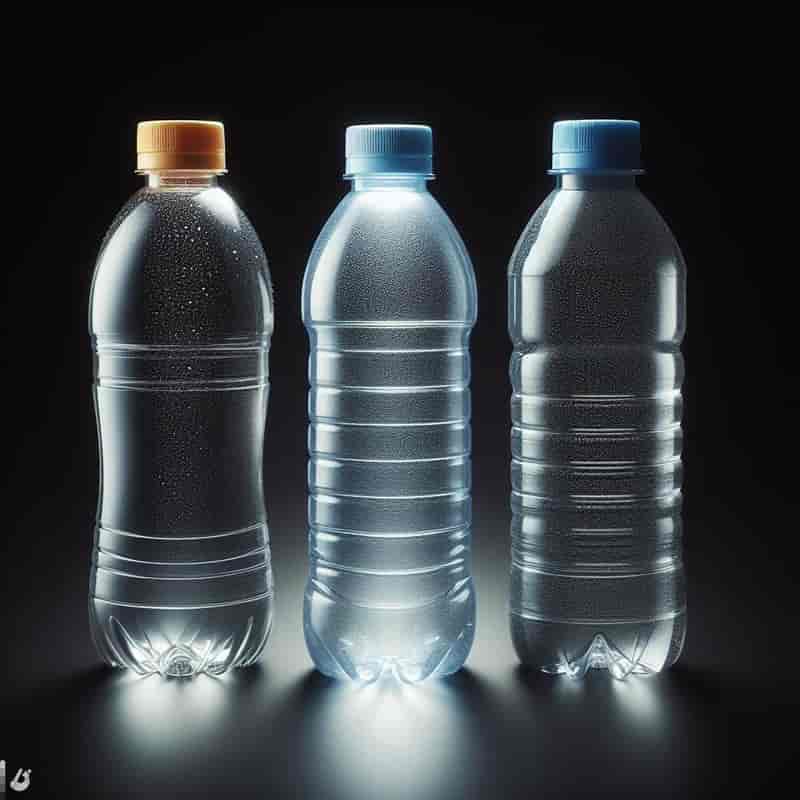
Brics countries shake up world order
The Brics constellation of countries is growing both in influence and membership. Expansion will require careful handling but is set to further increase the role of the group
Brics is an acronym from the world of investment banking that has become a global movement. Originally just ‘BRIC’, coined by the investment bank Goldman Sachs at the beginning of the century, it stood for Brazil, Russia, India and China, to describe a significant cluster of the world’s emerging economies with considerable potential for investors. The projection was that the four countries would dominate the global economy by the mid-21st Century. Recycling Guide
The ‘S’ stands for South Africa, which was added soon after. This year will see nations from the Gulf Co-operation Council join the club. There are around 20 countries applying to join, although one member-elect, Argentina, announced late last year that it would not be joining as planned, following Javier Milei’s win in the presidential election.
Since 2009 the five countries have formed themselves into a formal grouping with annual summits aimed at assisting co-operation among non-Western nations, the most recent of which took place in Johannesburg, South Africa in August 2023. It was the 15th meeting of the bloc. Recycling Guide
More…
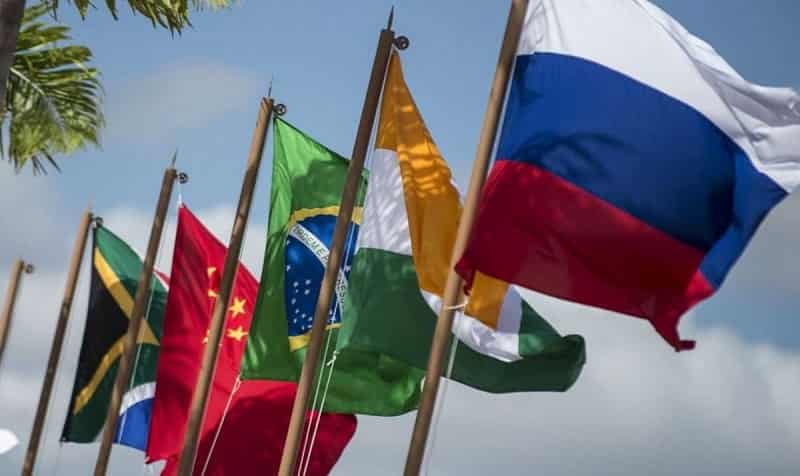
PET-Bottle Nylon – Germany delays plastic tax to 2025 08-01-2024
Recycling Guide
